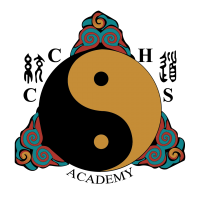Wu Yun Liu Qi II – Astro Climatology in the Practice of Herbal Medicine Michael L.Ac Michael Givens, MSTCM
Michael Givens is a licensed acupuncturist with an MS in Oriental Medicine from National College of Natural Medicine (now NUNM). He also holds an MA in Eastern Classics from St. John’s College, where he focused on classical Chinese language, the Yijing (Classic of Change), other Daoist and Confucian texts, and classical texts from India and Japan. In addition, Michael studied directly in a traditional clinical discipleship with Dr. Heiner Fruehauf.
He began teaching at NUNM upon graduation in 2009 and continues to teach classical Chinese herbal and formulas medicine through the College of Classical Chinese Medicine. Michael has self-published three books/translations and established the Shen Ming Press with two other colleagues, through which he annually publishes the Classical Almanac for each year.
Michael has been in private practice since 2009, and is the co-founder (with his wife, Dr. Allison Givens, ND) of Radiant Heart Center for Wholeness, LLC. He has also been a classical herbal clinical consultant with the Anatara Group in San Francisco, California, since their opening in 2012. He and his wife live in the windy woods of the Columbia River Gorge, where they are raising their two children, Kai and Umi in the Waldorf tradition.
September 10, 2021-September 11, 2021 9:00 AM-6:00 PM
16 Category 001 CAB units available
Type: Online Via Livestream or Recorded Lectures
Description:
Course Description
This course will further introduce the cosmological, philosophical, astronomical, and medical background to the theory found in chapters 66-74 in the Huangdi neijing suwen (as edited by Wang Bing in the Song Dynasty). We will continue to explore the worldviews and perspectives from different time periods in ancient (classical and medieval) China that form a basis for the 7 Great Chapters (Qipian Dalun). We will then look at classical sources as well as the alternative fields of divination practice related to the Wuyun Liuqi practice, and the basic structures of the systems. This theory opens up the possibility of perceiving and understanding medicine from a holistic worldview beyond that of the authors, and for this reason, as well as its clinical significance and usefulness, we will explore the depths and profundity of these systems in relation to modern diseases, including epidemics. We will compare “epidemics” with the classical perspective of the “movements of heaven” (Tianxing), and conclude by looking at the Wuyun Liuqi for 2021 leading up to 2022, and the clinical prescriptions (of Wei (flavor) and Qi) that are appropriate.
Topics and Learning Outcomes
Day 1 Topics:
1. Cycles and Spirals of the Qi of Heaven, Earth, and the Human Being; Cosmic nutrition, earthly nutrition; sources of pathology from ancient times to current (ancestral curse – heredity / evil wind – environment / black magic – toxicity and poisoning); various fields of practice from ancient times to now.
2. Biao-Ben-Zhongqi theory and application in the Wuyun Liuqi; Causes of illness; classical sources for the Wuyun Liuqi theory and practice.
3. Earthly vs Heavenly organs, their relationships and roles in physiology and pathology; earthly and heavenly influences with regards to weather, stress, and other illness factors.
Learning Outcomes: Students will be able to recognize the difference between what the ancients meant by “Heaven” and “Earth” with regard to the human form, human physiology, pathology and other influences, as well as with regard to weather phenomena and how the environment affects health and illness. Students will be able to work directly in practice with the Biao-Ben-Zhongqi theory with regard to using the Wuyun Liuqi. Students will challenge their own (and their culture’s) perception of the causes of illness and seek to understand the meaning of an illness or an epidemic in a greater context, informed by ancient wisdom and practice.
Day 2 Topics:
Wuyun Liuqi Foundations: treating the whole person; psycho-neuro-immunology; flight, fright, submission, suction and pressure; core textual sources from the Suwen (e.g. Suwen 9, 19, 66-74); basic calculations and calendar structures.
Epidemics vs. Tianxing; who gets sick and why; the nature of illness and healing in relations to each other and as dynamic processes; various systems: Neijing, Shanghanlun, Qipian Dalun, Fuxingjue, as well as the art of divination from other fields (Fangshi, Lingyi, etc.)
Wuyun Liuqi Analysis and Indications for 2021; Prescriptions; Preparations for 2022.
Learning Outcomes: Students will be able to apply the Wuyun Liuqi theory to a modern understanding of psycho-neuro-immunology with regard to health and illness and recognize how holistic thinking helps practitioners to see the whole human being within the context of their own lives. Students will be able to read, understand, and apply classical source material to their practice with regard to holistic concepts as well as the specific Wuyun Liuqi system. Students will be able to identify the difference between a modern understanding, or even a late-medieval understanding of epidemics verses an ancient and early-medieval concept of “Heavenly Movements (Tianxing). Students will be able to compare and contrast various fields of classical and medieval forms of medicine and the arts of divination. Students will be able to begin to assess current times, situations, and pathologies that they see in clinic, and prepare for what may come.
Assessment Questions:
1. What are the causes of illness as most people see them today and how does this relate to the ancient understanding of causes of illness? How can we come to a holistic and wise perspective of these causes (both ancient and contemporary)?
2. What is the relationship between the Earthly organs of the 4 directions and the 5 Heavenly organs that house the 5 Shen? What does that tell us about the relationship between the Liuqi and Wuyun?
3. Why do epidemics arise? Why do they not affect everyone? Why do they affect certain ages differently?
4. What can we discern about the illness tendencies of our times, and what may be the driving forces behind them?
